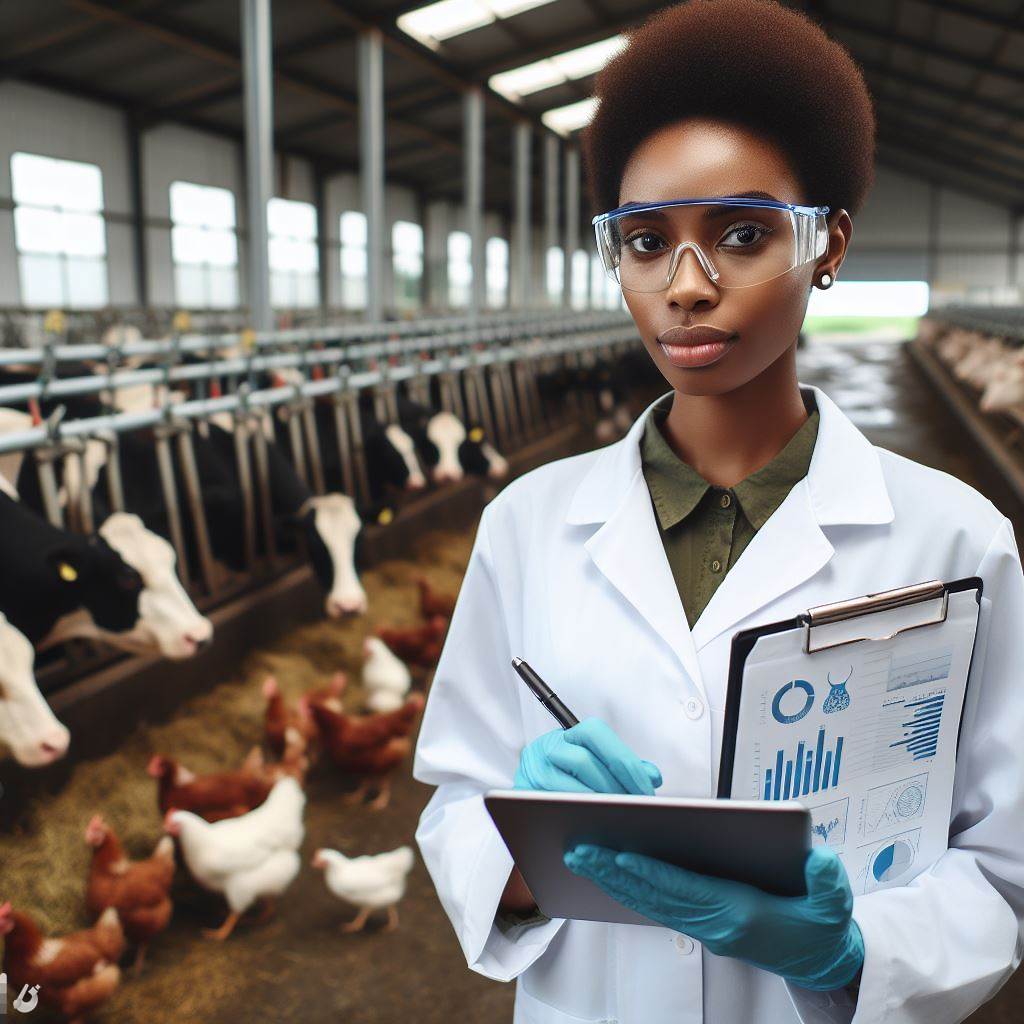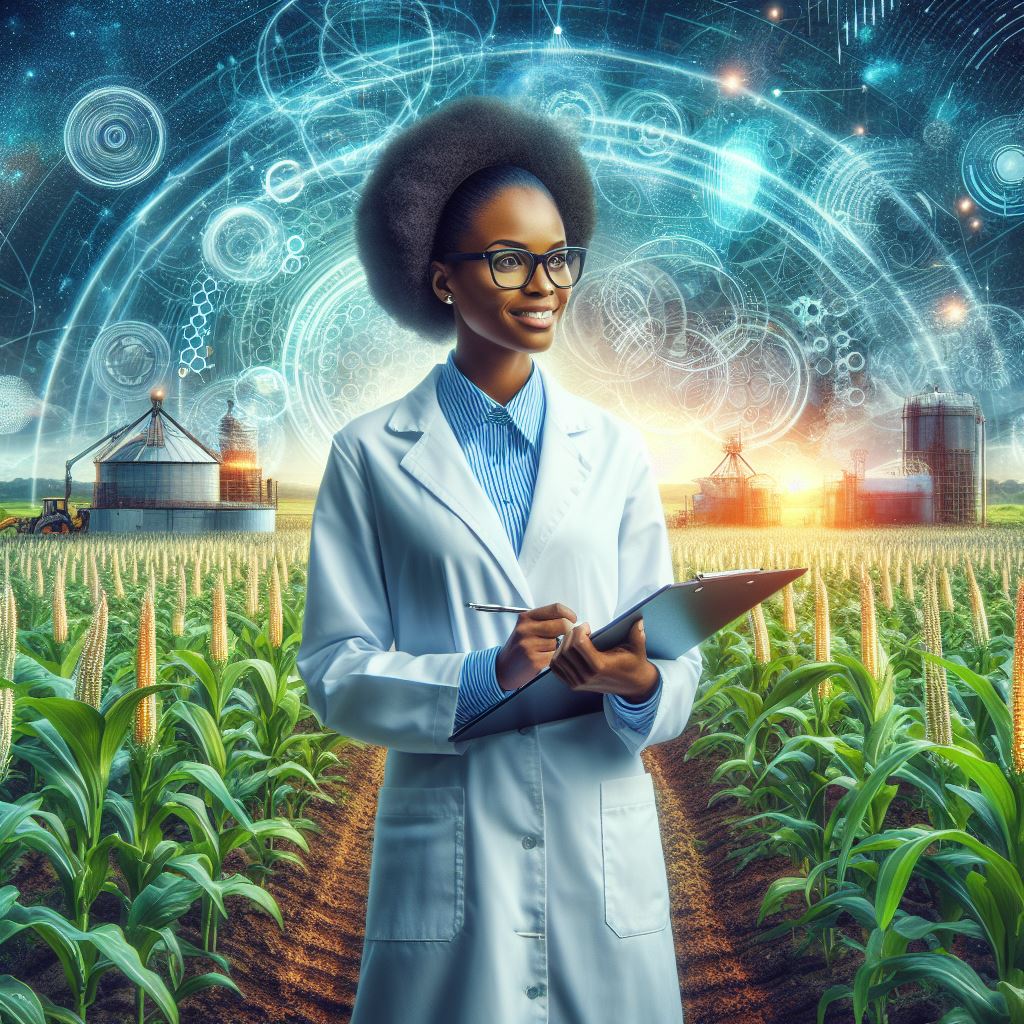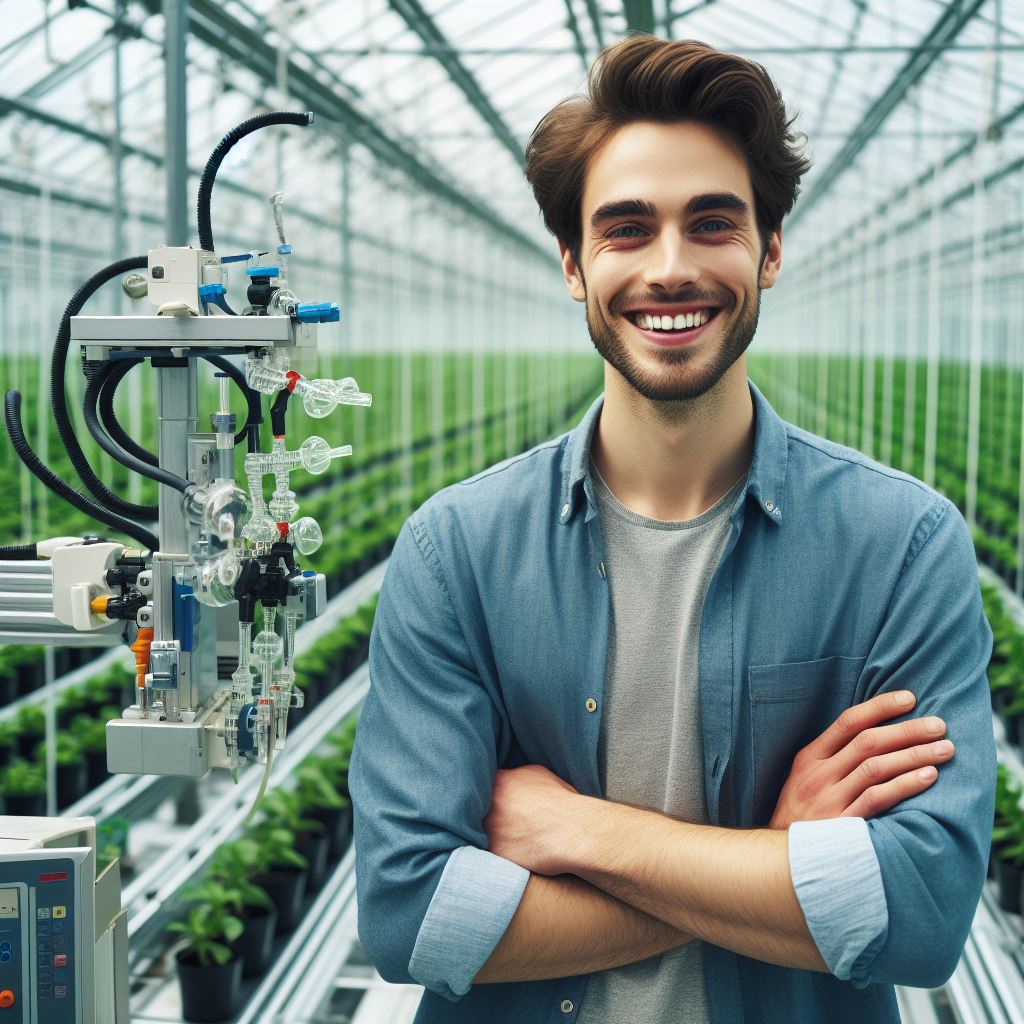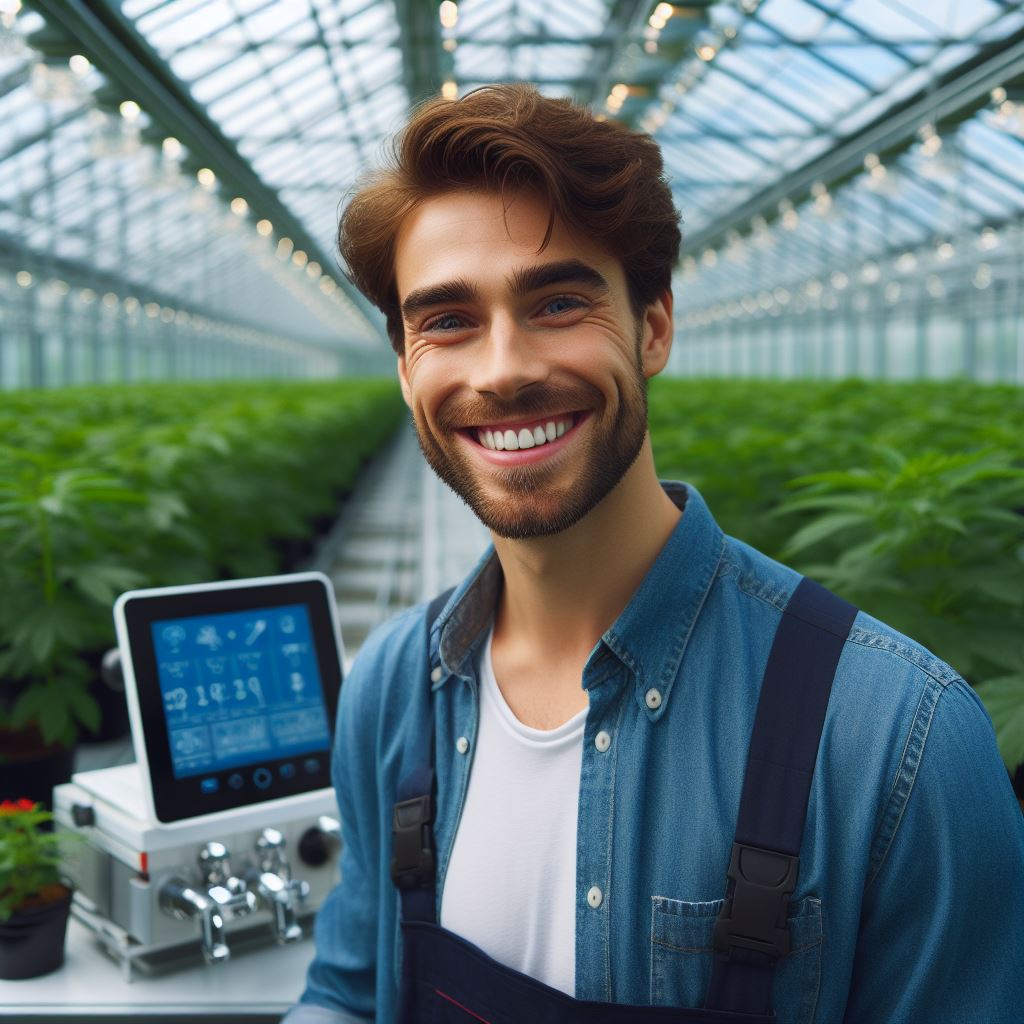Introduction
Hydroponics is a revolutionary method of agriculture that allows plants to be grown without using traditional soil.
Instead, plants are cultivated in a nutrient-rich water solution, providing them with all the essential elements they need to thrive.
This method offers numerous advantages, making it an increasingly popular choice among farmers and gardeners.
The concept of hydroponics itself is not new. In fact, it can be traced back several centuries to the legendary Hanging Gardens of Babylon, one of the Seven Wonders of the Ancient World.
These lush gardens were believed to have been built using a form of hydroponics, enabling plants to grow in a desert environment.
Today, hydroponics plays a vital role in addressing the challenges of modern agriculture.
With increasing concerns about soil depletion, limited arable land, and water scarcity, soilless agriculture provides a sustainable alternative.
Hydroponic systems allow crops to be grown in controlled environments, optimizing resource utilization and minimizing waste.
Moreover, hydroponics offers several benefits over traditional farming methods.
It requires less water compared to soil-based cultivation, as the nutrient-rich water solution can be recirculated.
This not only conserves water but also reduces the risk of water pollution from chemical fertilizers.
Additionally, hydroponics allows for precise control over nutrient levels, pH, and environmental factors such as temperature and light.
This enables farmers to cultivate crops year-round, regardless of the external climate.
It also eliminates the need for pesticides and herbicides, making hydroponic produce healthier and safer for consumption.
In fact, hydroponics represents a significant advancement in agriculture.
Its ability to grow plants without soil offers a sustainable solution to some of the pressing challenges faced by traditional farming methods.
As the world population continues to grow, embracing soilless agriculture will be crucial in ensuring food security and environmental sustainability.
Advantages of Hydroponics
Hydroponics offers numerous advantages compared to traditional soil-based agriculture.
One of the key benefits is efficient water usage. Hydroponic systems utilize significantly less water, potentially saving up to 90% of water when compared to conventional farming methods.
This is due to the recirculation of water in the system, preventing wastage and ensuring water conservation.
Efficient water usage
In addition to efficient water usage, hydroponics provides precision nutrient delivery to plants.
Nutrients are directly delivered to the roots, ensuring that plants receive the ideal amount of essential nutrients they need for optimal growth and productivity.
This controlled delivery system eliminates the guesswork involved in soil-based agriculture, where nutrients may not be evenly distributed or may get washed away in rain.
Precision nutrient delivery
Furthermore, hydroponics promotes faster growth rates in plants.
With constant access to water, nutrients, and oxygen, plants in hydroponic systems can grow up to 50% faster than those grown in traditional soil-based methods.
The controlled environment provides optimal conditions, allowing plants to thrive and reach maturity quickly.
This accelerated growth rate is particularly beneficial for commercial farmers who aim for high crop yields.
Space utilization
Another advantage of hydroponics is better space utilization.
Limited land availability is a significant challenge for agriculture, especially in urban areas.
Hydroponics offers a solution by enabling vertical farming.
Plants can be stacked in tiers or housed in vertical towers, maximizing space utilization.
This vertical approach increases the overall productivity per square foot, making hydroponics a suitable option for urban farming and maximizing crop production in small areas.
Reduction in pests and diseases
One remarkable aspect of hydroponics is the reduction in pests and diseases.
Soil-borne pests and diseases can cause significant damage to crops, impacting yields and quality.
However, with soilless agriculture, this risk is minimized.
Hydroponic systems eliminate the use of soil, reducing the presence of pests and diseases.
Consequently, the reliance on pesticides is significantly reduced, making hydroponics an environmentally friendly and sustainable farming method.
In summary, hydroponics offers several advantages that make it a viable alternative to traditional soil-based agriculture.
It allows for efficient water usage, providing significant water savings.
The precision nutrient delivery system ensures plants receive the exact nutrients they need, promoting healthy growth.
With faster growth rates and optimal space utilization, hydroponics maximizes productivity.
Additionally, the reduction in pests and diseases reduces the need for harmful pesticides.
These advantages position hydroponics as a sustainable and innovative approach to modern agriculture.
Common Hydroponic Systems
In soilless agriculture, there are several hydroponic systems that are commonly used to grow plants.
These systems provide plants with the necessary nutrients and water, without the use of soil.
Let’s explore some of these common hydroponic systems:
Nutrient Film Technique (NFT)
The NFT system is one of the most popular hydroponic systems.
It consists of a sloping tray where a thin film of nutrient-rich water continuously flows over the plant roots.
The roots absorb the necessary nutrients, and the excess water is then recirculated back to the reservoir.
Deep Water Culture (DWC)
In the DWC system, the plant roots are suspended in a nutrient-rich solution.
The roots are partially submerged in the nutrient solution, allowing them to absorb the necessary nutrients.
An air pump provides oxygen to the solution, promoting healthy root growth.
Transform Your Agribusiness
Unlock your farm's potential with expert advice tailored to your needs. Get actionable steps that drive real results.
Get StartedAeroponics
Aeroponics is a unique hydroponic system where plants are grown in an environment with high oxygen levels.
The plant roots are misted with a nutrient-rich solution, creating a moist and oxygen-rich environment.
This system promotes rapid growth and efficient nutrient absorption.
Drip System
The drip system is a widely used hydroponic system that delivers a controlled amount of nutrient-rich water to the plant roots.
A timer is used to regulate the flow of water, ensuring that the plants receive the proper amount of nutrients.
Excess water is collected and reused.
Ebb and Flow System
The ebb and flow system, also known as the flood and drain system, works by temporarily flooding the plant roots with nutrient-rich water and then draining it back into the reservoir.
This cyclic process ensures that the plants receive the necessary nutrients while allowing the roots to receive oxygen during the drainage phase.
These common hydroponic systems offer various advantages over traditional soil-based agriculture.
They allow for precise control over nutrient levels, reduce water usage, eliminate the need for pesticides or herbicides, and maximize crop yields.
Additionally, these systems can be tailored to suit various types of plants, making them versatile in farming practices.
The choice of hydroponic system depends on factors such as the type of plants being grown, available space, budget, and the skill level of the grower.
Each system has its unique features and benefits, making it necessary to carefully consider these aspects when determining the most suitable system for a specific application.
As technology continues to advance, new and innovative hydroponic systems are being developed to further improve soilless agriculture.
These advancements aim to enhance efficiency, productivity, and sustainability, making hydroponics an increasingly viable option for the future of agriculture.
In short, hydroponics offers an efficient and sustainable method of growing plants without the use of soil.
The various hydroponic systems, such as NFT, DWC, aeroponics, drip system, and ebb and flow system, provide flexibility and control that traditional farming methods lack.
With continuous research and development, hydroponics is poised to revolutionize the agricultural industry in the years to come.
Read: Climate Change and Agribusiness
Essential Components for Hydroponics Setup
Growing medium options
In hydroponics, the growing medium serves as a support system for the plants.
It is responsible for holding the roots securely while allowing access to water, oxygen, and nutrients.
There are several options available for hydroponic growing mediums.
- Rockwool: It is a popular choice due to its ability to retain moisture while providing excellent air circulation to the roots.
- Coco Coir: Made from the fibrous husk of coconuts, coco coir retains water well and is a sustainable option for hydroponic gardening.
- Perlite: This lightweight material increases aeration in the root zone and helps improve drainage.
- Clay pebbles: Also known as hydroton, clay pebbles provide stability to the plants while allowing water to flow freely through the roots.
Nutrient solution
In hydroponics, plants are fed through a nutrient solution instead of traditional soil.
The nutrient solution supplies all the necessary elements required for plant growth, including macronutrients and micronutrients.
- Macronutrients: These include nitrogen, phosphorus, and potassium, which are essential for plant growth and development.
- Micronutrients: These are minerals such as iron, zinc, and copper. Although required in smaller quantities, they play a crucial role in plant health.
pH control
Maintaining the right pH level is crucial for hydroponic systems as it affects nutrient availability to the plants.
Most plants prefer a slightly acidic pH level of around 5.5 to 6.5 for optimal nutrient uptake.
- pH testing: Regular monitoring and adjustment of pH levels using a pH testing kit is necessary to ensure the plants receive the right nutrients.
- pH adjusters: Acid or alkaline solutions are used to bring the pH level up or down, depending on the requirements.
Lighting requirements
Proper lighting is essential for photosynthesis, the process by which plants convert light into energy.
In hydroponics, artificial lighting is used to compensate for the absence of natural sunlight.
- Types of lights: LED (light-emitting diodes) and fluorescent lights are commonly used in hydroponic systems due to their energy efficiency and ability to provide the necessary light spectrum.
- Light duration: Plants require a specific number of hours of light each day to thrive. Using a timer to control the lighting schedule ensures consistency.
Ventilation and airflow
Just like plants grown in soil, hydroponic plants need access to fresh air and circulation to prevent issues like mold and pests.
- Ventilation system: Installing exhaust fans and intake fans helps maintain proper air exchange within the grow area.
- Air circulation: Using oscillating fans within the hydroponic setup helps ensure even distribution of fresh air and prevents stagnant pockets of air.
In general, setting up a hydroponic system requires essential components such as a growing medium, nutrient solution, pH control, lighting, and proper ventilation.
Choosing the right components and maintaining them diligently will contribute to the success of your soilless agriculture endeavor.
Read: Agribusiness Success Stories
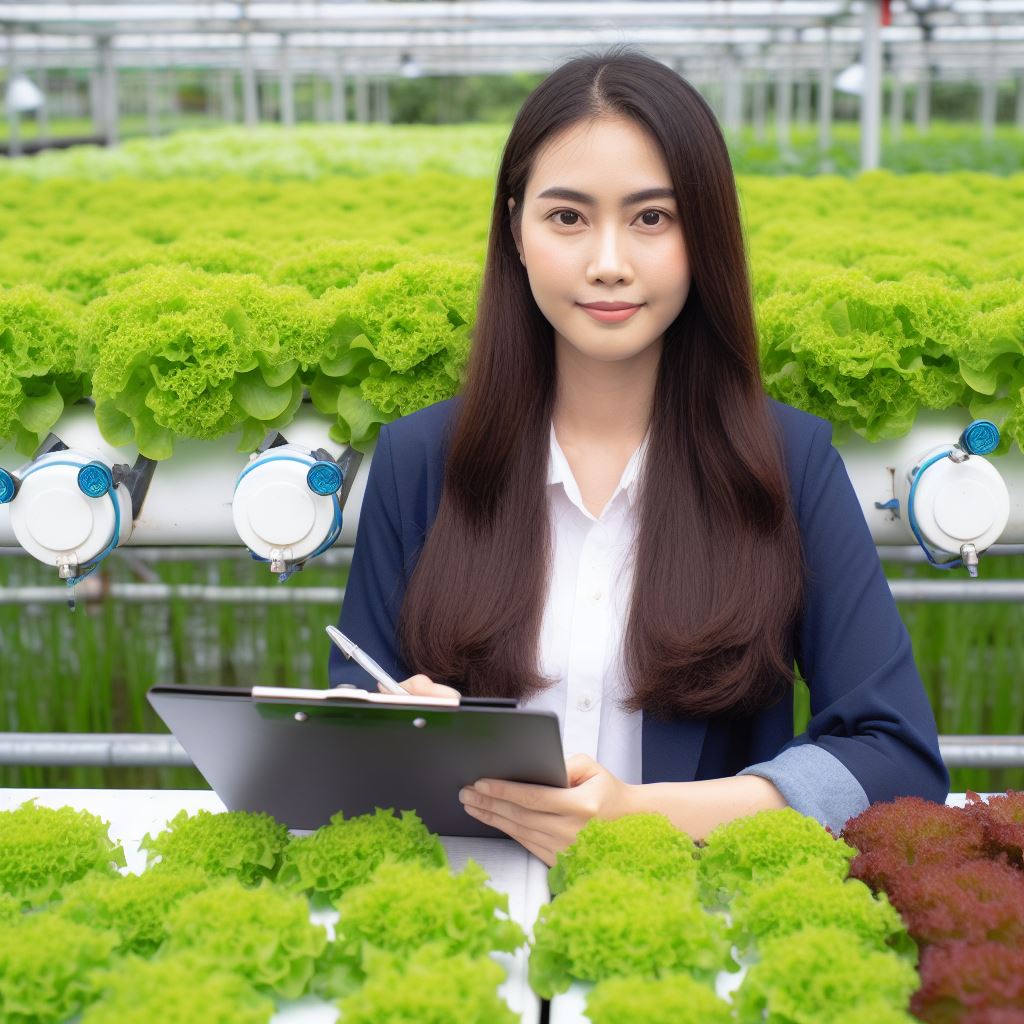
Successful Hydroponic Crops
In hydroponic agriculture, there are various crops that thrive without soil and yield incredible results.
Leafy Greens
Leafy greens, such as lettuce, require a constant supply of water and nutrients to maintain rapid growth.
Herbs
Herbs, on the other hand, prefer slightly drier conditions and can thrive with minimal water requirements.
Tomatoes and Cucumbers
Tomatoes and cucumbers benefit from a well-balanced nutrient solution and ample support for their vines.
Strawberries
Strawberries, known for their delicate nature, thrive in hydroponic systems with proper spacing and efficient drainage.
Flowers and Ornamental Plants
Flowers and ornamental plants, while adding beauty to any space, need precise nutrients and controlled environments to flourish.
Hydroponic systems provide ideal conditions to tailor the growing environment for optimal yield and quality.
The controlled environment ensures that crops are not exposed to pests, diseases, or extreme weather conditions.
Additionally, hydroponics allows for year-round cultivation, providing a consistent supply of fresh produce regardless of external factors.
Showcase Your Farming Business
Publish your professional farming services profile on our blog for a one-time fee of $200 and reach a dedicated audience of farmers and agribusiness owners.
Publish Your ProfileFor leafy greens, hydroponics enables growers to produce high volumes of dense and nutritious greens within a short period.
Herbs grown hydroponically maintain their aroma and flavor, making them popular choices for culinary enthusiasts.
Tomatoes and cucumbers from hydroponic systems are often sweeter, juicier, and have a longer shelf life.
Hydroponic strawberries boast exceptional sweetness and firmness, making them a favorite among consumers.
Growing flowers and ornamental plants hydroponically allows for precise control over their color, size, and overall appearance.
In a nutshell, hydroponics offers a wide range of successful crops, from leafy greens and herbs to tomatoes, strawberries, flowers, and ornamental plants.
The controlled environment and optimized nutrient solutions allow for high-quality and sustainable cultivation year-round.
Whether growing for personal consumption or commercial purposes, hydroponic systems continue to revolutionize modern agriculture.
Read: Innovative Agri Business Models
Challenges in Hydroponics
Addressing these challenges is crucial to maximize the potential of hydroponics and ensure long-term success in soilless agriculture.
Let’s delve deeper into each of these challenges:
Initial cost investment
Setting up a hydroponic system requires a significant financial investment.
It involves purchasing essential components such as grow lights, growing racks, growing mediums, nutrient solutions, and environmental controls.
However, despite the higher upfront costs, hydroponics can offer higher returns in the long run through increased productivity and reduced water usage.
Technical knowledge and expertise
Hydroponic farming demands a deep understanding of plant biology, nutrient solutions, and environmental controls.
Growers need to familiarize themselves with the ideal pH levels, nutrient concentrations, and temperature ranges for different plant species.
Additionally, they must be able to troubleshoot any issues that may arise within the system.
Monitoring and troubleshooting
Maintaining optimal conditions for plant growth is crucial in hydroponics.
Regular monitoring of pH levels, nutrient concentrations, and temperature ensures that plants receive the necessary nutrients and environmental conditions for healthy growth.
Quick troubleshooting is vital to address any system malfunctions or nutrient imbalances that might affect crop development.
Potential for equipment failures
Even with regular maintenance, hydroponic systems can experience equipment failures.
Pumps can seize, sensors may malfunction, or automated controls can fail.
It is essential to have spare parts readily available and conduct routine check-ups to identify any potential failures before they become significant issues.
Risk management for crop failure
Crop failure is a significant concern in hydroponics, just as it is in traditional agriculture.
Diseases, pests, or nutrient imbalances can harm crops and reduce yields.
Implementing preventive measures such as regular cleaning, sterilizing equipment, practicing crop rotation, and pest control can help minimize these risks.
By understanding the challenges and working to overcome them, hydroponic farmers can ensure a successful and sustainable soilless agriculture system.
While the initial investment and technical knowledge required may seem daunting, the benefits of higher yields, water efficiency, and controlled environments make hydroponics a promising solution for the future of agriculture.
Read: Farm Management Best Practices
Future Trends and Innovations in Hydroponics
Vertical farming
Vertical farming is a future trend in hydroponics that involves growing plants in vertically stacked layers or towers.
With limited land availability, vertical farming allows for maximizing crop production in urban areas or small spaces.
Furthermore, it reduces the need for pesticides and herbicides, making it an environmentally-friendly farming method.
Adoption of smart technologies
The adoption of smart technologies is revolutionizing hydroponics by enhancing control and monitoring.
Through sensors, drones, and Internet of Things (IoT) devices, farmers can optimize nutrient levels, light exposure, and temperature.
By analyzing data and making adjustments accordingly, farmers can achieve higher yields and reduce resource consumption.
Integration of renewable energy
Hydroponics is expected to increasingly integrate renewable energy sources to power its systems.
By using solar panels or wind turbines, it becomes possible to achieve energy self-sufficiency in hydroponic farms.
This not only reduces operating costs but also makes hydroponics a sustainable and eco-friendly cultivation method.
Exploration of new crop varieties
Hydroponics enables the exploration and cultivation of new crop varieties that were previously challenging to grow.
With precise control over environmental conditions, farmers can experiment and develop crops with desirable traits.
This opens up opportunities for growing exotic fruits, herbs, and vegetables throughout the year, regardless of seasonality.
Advances in automation and robotics
The future of hydroponics lies in the extensive use of automation and robotics.
Robotic systems can handle tasks such as planting, harvesting, and monitoring plants with precision and efficiency.
This reduces labor costs and improves productivity, making hydroponics a more economically viable option for farmers.
In closing, hydroponics is poised to witness several future trends and innovations that will further revolutionize soilless agriculture.
Vertical farming, the adoption of smart technologies, integration of renewable energy, exploration of new crop varieties, and advances in automation and robotics will shape the future of hydroponics.
These advancements will not only increase crop yields but also make hydroponics a more sustainable and efficient method of production.
Conclusion
Recap of Advantages and Challenges
Hydroponics, a revolutionary method in soilless agriculture, offers numerous advantages.
Enhanced crop yields, reduced water usage, and faster growth cycles characterize its benefits.
Challenges, such as initial setup costs and technical expertise requirements, should not overshadow the potential gains.
Recognizing both sides is crucial for informed decisions on adopting hydroponics.
Encouragement for Further Exploration of Hydroponics
The journey doesn’t end here. Hydroponics invites further exploration and innovation.
Research and development can address challenges, making hydroponics more accessible and efficient.
Embracing this technology opens doors to new possibilities in food production.
Importance of Sustainable and Efficient Agricultural Practices
Sustainability is paramount. Hydroponics aligns with this goal by conserving water, minimizing land usage, and reducing the need for pesticides.
Its efficiency in resource utilization contributes to a more sustainable agricultural future.
As we navigate the challenges of feeding a growing global population, adopting practices like hydroponics becomes not just a choice but a necessity.
In summary, hydroponics emerges as a beacon of hope for the future of agriculture.
Recognizing its advantages, addressing challenges, and encouraging further exploration pave the way for a more sustainable and efficient food production landscape.
As technology evolves, so does our responsibility to embrace innovations that can lead us towards a greener and more abundant future.

